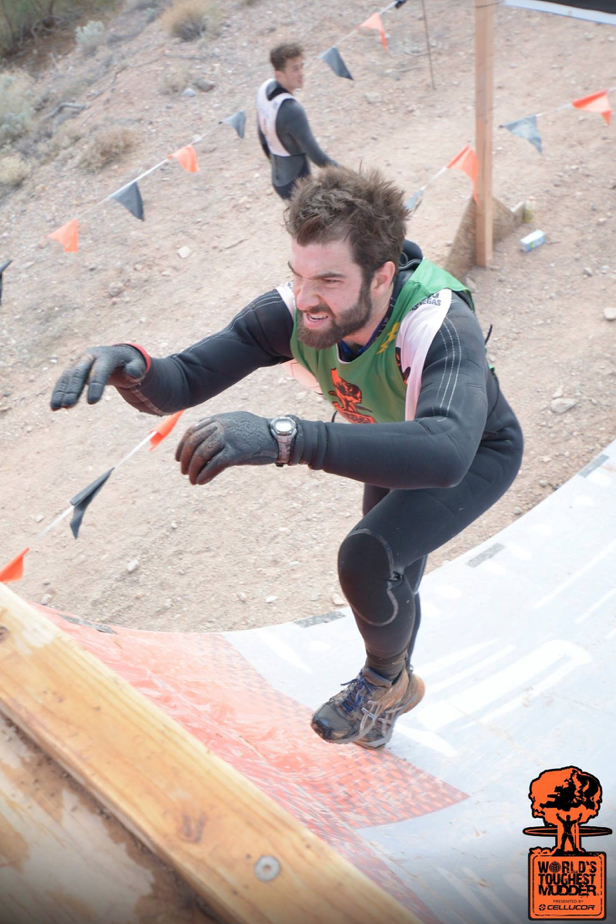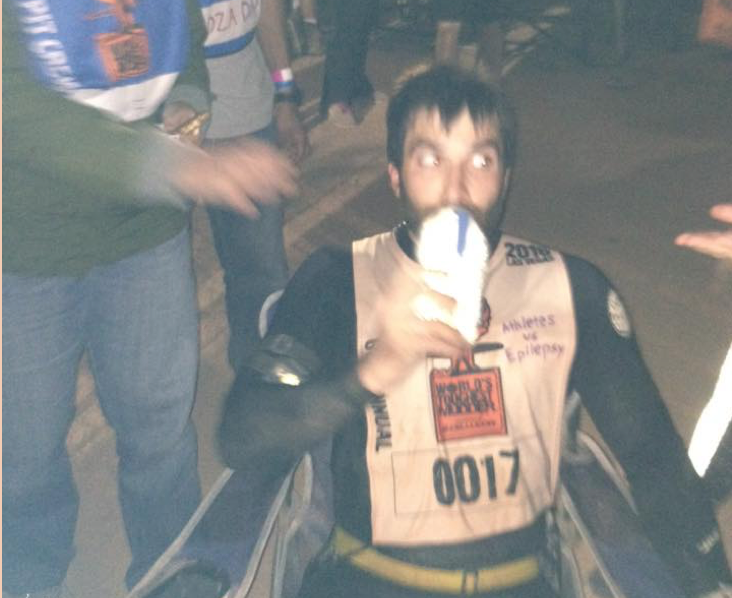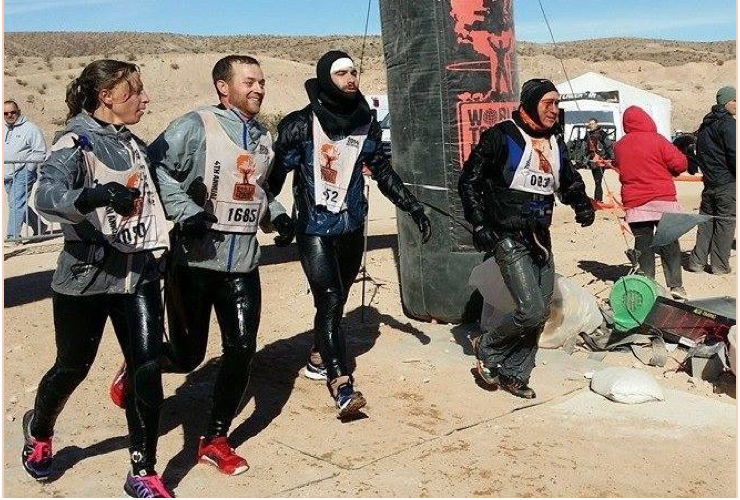One of the most common environmental challenges in endurance OCRs, especially of the Tough Mudder variety, is cold stress. World’s Toughest Mudder is famous for being a race where a wetsuit is normally required for successful completion of 24 hours on the course. As humans, we have really strange reactions to cold stress, so let’s talk about the best practices for dealing with the cold.
Prepare appropriate gear
Feel cold? You should SPEED UP!
Wet is cold; naked is warm. (This is not paradoxical undressing.)
Selecting Gear
If you show up to a cold-weather race involving lots of water in silkies and a cotton t-shirt, you’re probably not going to do well. When preparing gear for a race, talk to people that run around your pace what they used as a guide for your own packing. The greatest fallacy is considering temperature alone without thinking about water exposure, wind exposure, or the duration of the race. If you’re going to be wet for a prolonged period of time, you will be cold. Water takes a huge amount of energy to warm up a single degree, and it won’t ever be body temperature, so the water will suck your heat away. Similarly, wind will increase evaporation of sweat off your body and lower your temperature more. Lastly, if you’re racing for over 12 hours, your body’s ability to regulate temperature decreases. In general, your metabolism slows down and you have trouble holding on to heat. Even if the conditions don’t change in a 24-hour race, you’ll probably find that you’ll end the race wanting more clothing than you started with.

Wesley Kerr (Dr. Redtights) at WTM 2015 feeling comfortable in a 6/5mm wetsuit for almost the whole event. Photo cred: Tough Mudder.
Hypothermia paradox: if you feel cold, you should SPEED UP!
As humans, we have this ingrained sense that if something gets hard, we should slow down to be able to tackle it head on. In hot climates or when your muscles are fatigued, this makes absolute sense. In cold climates, this instinct can get you killed. There are numerous stories of hikers coming off mountains hypothermic and making the decision to stop to make camp only a few miles from safety. When they stopped in cold temperature without the proper gear to warm them up, their metabolism slowed down and therefore their body generated less heat. This made them colder, causing them to slow more until they stopped completely.
That’s why if you’re in a race and you feel cold, you should speed up! We say that we “burn” calories because calories are a unit of heat: how much heat is given off when a food is combusted. The same thing happens in your body. As you burn calories by doing work, the temperature of your muscles increases. This raises your body temperature. Therefore, if you’re in a race and you’re feeling cold, kick your pace up a notch to stave off the chills. If you slow down, you do less work so your body will go into a downward spiral ending in hypothermia.
The only caveat to this is you need the resources to burn those calories. If you don’t have food to replace these calories that you’re using to generate heat, you’re going to burn hot and fast until you have nothing left. If you’re insufficiently trained to keep a certain pace of calories burned per hour, you need to change your gear to overcome this. That’s why you see elite endurance racers that forego wetsuits during WTM: they’re burning more calories per hour, so they don’t need as much gear to help them stay warm. If you’re a slower racer, you’ll need more help.

When you’re cold, you might seem crazier than you are! Wesley Kerr (Dr. Redtights) at WTM 2016 in a 3mm wetsuit feeling okay. Photo cred: Brad Kerr.
Wet is cold, naked is warm.
The last point that we’ll talk about is what happens after the race or during races where pit stops are available. As discussed above, if you’re wet and stay wet, you will get cold because water is very difficult to heat up. Therefore, if you’ve got clothing—including a wetsuit—that is wet, the best way to warm up is to remove that clothing. You’re removing the water from your body without letting it evaporate. Your skin also dries much faster than most materials; so if you’re done with a race and are cold, STRIP! (The modest among us would advise having a towel and dry change of clothing, but you get my point.)
Because you’ll ask: Paradoxical undressing is when people in the final stages of hypothermia take off all their clothes before they die from hypothermia. While the best way to rewarm someone with hypothermia is for the cold person and the person who is doing the rewarming are naked or minimally clothed, paradoxical undressing is not related to this recommendation.

Finish line at WTM 2014, the year of the sandstorm. We finished wet & cold, so it was stripping time! (Left to right: the McBride’s, Wesley Kerr, Joe Perry). Photo cred: Brad Kerr.
Dr. Redtights Subtip/clarification:
I’m talking about situations in races where you feel cold. This is different from hypothermia. Hypothermia is defined by a core body temperature lower than 95F (35C) and has clinical stages that are mostly defined by increasing confusion and uncoordinated involuntary motions. If a racer is hypothermic to the point of being confused, having difficulty speaking or thinking, or forgetting things, their race should be over. In my opinion, he or she needs to be rewarmed immediately for safety.
Medical/Legal Disclaimer: The advice in this article is based on experience, knowledge, and opinion and may not apply to your specific situation. You are responsible for your own health care decisions. Wesley Kerr (Dr. Redtights) has an MD & Ph.D. but has not completed internship so he is not a fully licensed physician. If you are concerned about a specific situation, please follow the advice of a medical professional familiar with your health and your specific case.


Leave A Comment